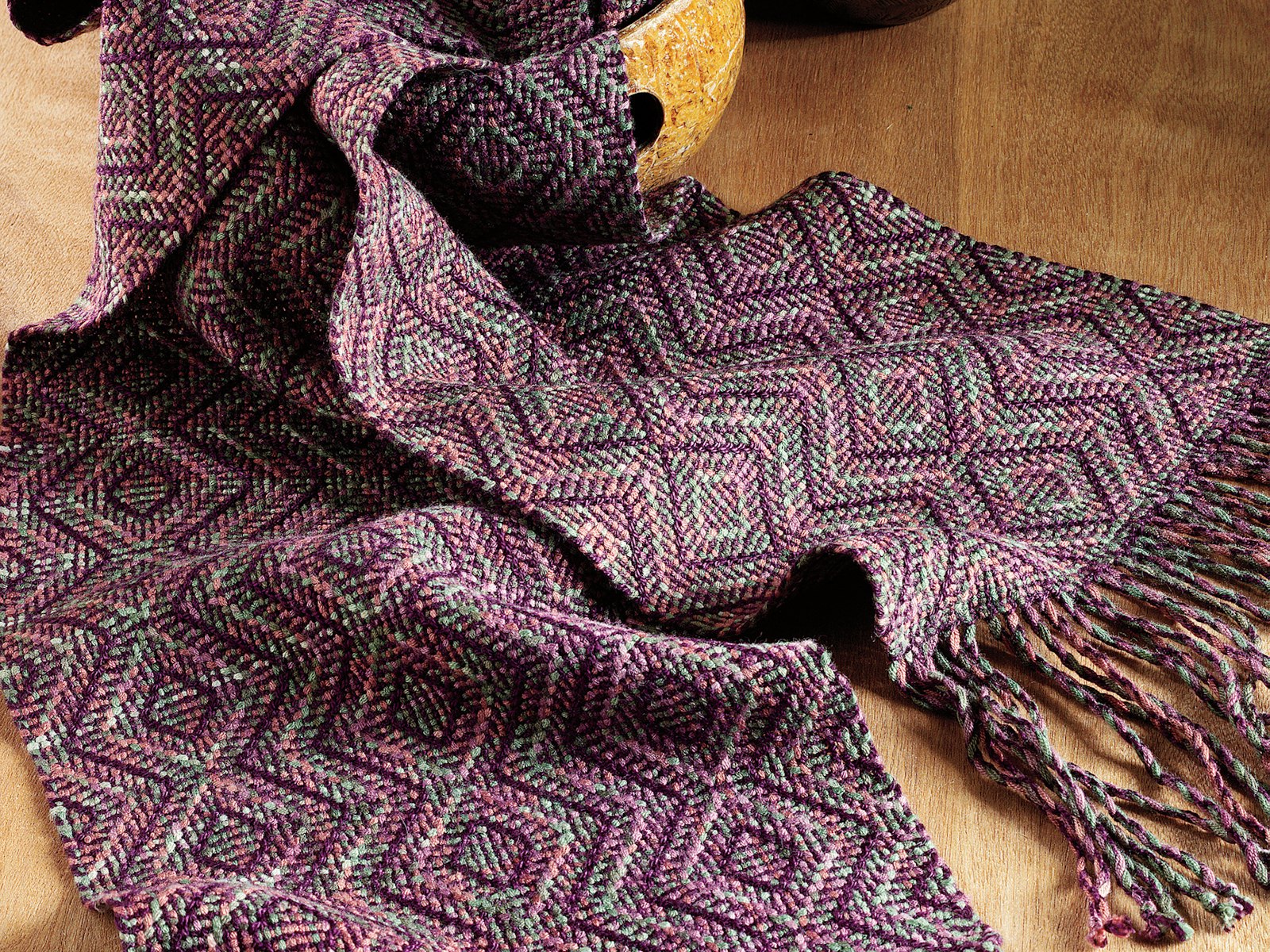First, let’s take a look at shadow weave’s larger family. Shadow weave is a “color-and-weave” effect, not a weave structure. Color-and-weave describes a cloth in which the pattern you see is not the warp color contrasting with the weft color the way you see pattern in, say, twill. Instead, you see a design created by two different colorways, both of which appear in the warp and in the weft. In the computer-generated draft in Figure 1, purple threads alternate with tan threads (8/8) in both warp and weft. The visual design is a tan star on a purple background. If you were looking at the cloth, you would not notice which threads were warp or weft.
Log Cabin
Log cabin is a color-and-weave effect with a plain-weave interlacement. Two colors alternate in both warp and weft (usually 1/1). If that alternation is consistent, horizontal or vertical lines are produced (dark weft covering light warp; light weft covering dark warp = horizontal; dark weft covering dark warp; light weft covering light warp = vertical). If at any point, two threads of the same color are threaded or woven in succession, the actions described above are reversed: horizontal lines change to vertical and vice versa. Changing the 1/1 ratio produces many different color-and-weave designs.

Left: 1. Color-and-weavestars. Right: 2. Log cabin.
Shadow Weave
Shadow weave is similar to log cabin in that it is a color-and-weave effect with vertical and horizontal lines. The interlacement is plain-weave with 2-thread floats at changes between vertical and horizontal lines.
It is amazing to realize that Mary Meigs Atwater invented shadow weave. However, she didn’t discover it by extending log cabin; instead, she came to it through warp rep.
Warp rep is a warp-faced block weave in which two colors alternate in the warp and two thicknesses alternate in the weft. The color that is raised for the thick pick is the color that shows on the face in a particular block; the opposite color is raised for the thin pick and shows only as a thin line. The two warp colors are threaded on what are called “opposite” shafts in each block: darks on 1, lights on 3 for Block A; darks on 2, lights on 4 for Block B; lights on 1, darks on 3 for Block C; lights on 2, darks on 4 for Block D.
Atwater must have asked herself: What if I spread the dense warp and used the same size yarns in the weft for a balanced weave? The result was shadow weave.
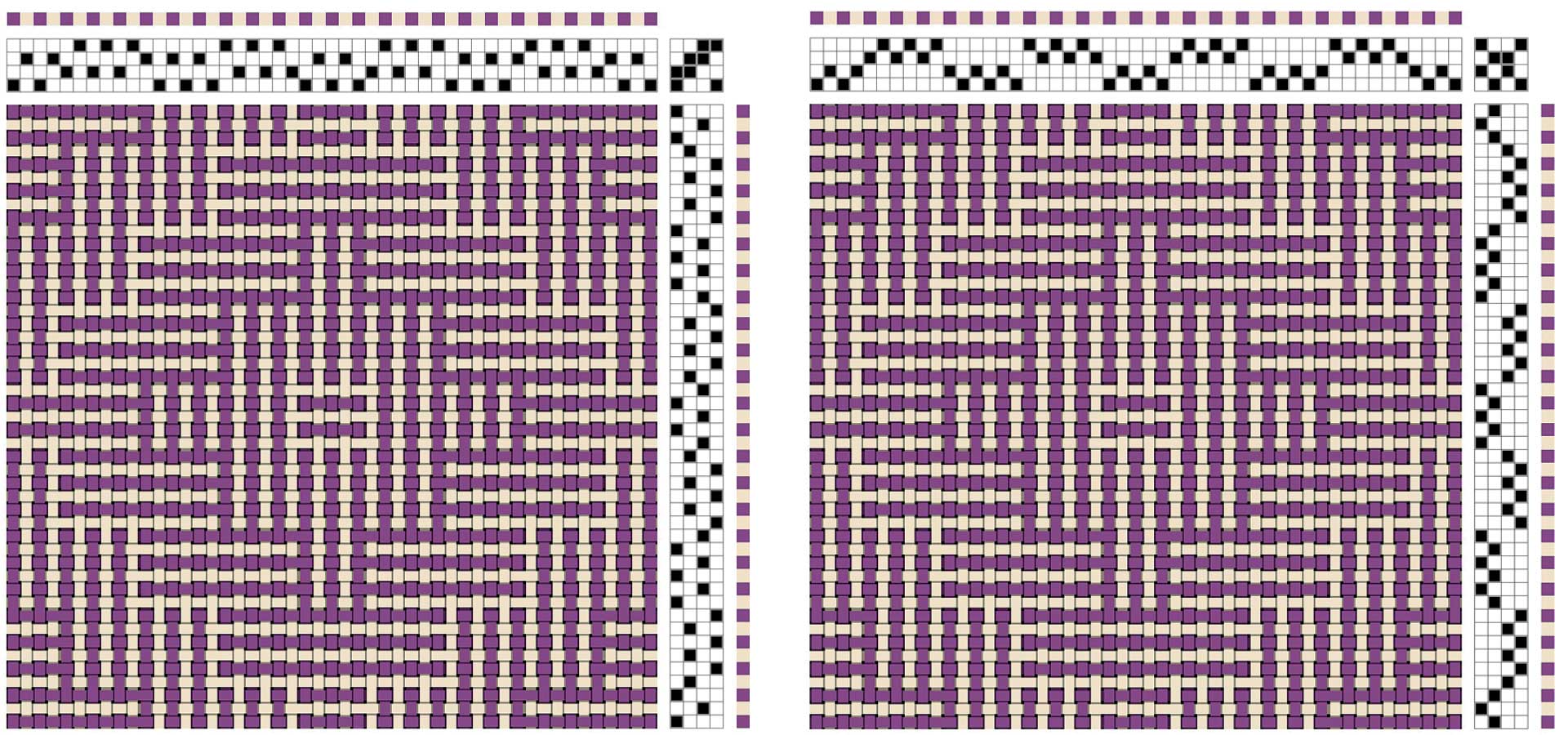
Left: 3. Shadow weave: Atwater system. Right: 4. Shadow weave: Powell system.
Atwater vs Powell
The “opposite” positions in warp-rep blocks is likely to have been developed to spread dense adjacent threads to shafts as far from each other as possible for easier shed formation. Marian Powell rearranged the threading for shadow weave to adjacent shafts (A and C on 1-2; B and D on 3-4, etc.). Her threading system made it a bit easier to visualize the blocks. She created myriad designs using block profile drafts as a starting point.
Shadow-Weave Drafting
The drafts in this issue use both the Powell and Atwater systems. The interlacements are the same for both. Any 4-shaft draft can be changed from one system to the other simply by exchanging shafts 2 and 3 in the threading and tie-up and exchanging treadles 2 and 3. (The exchange is more cumbersome with more shafts.)
Most block weaves show strong color or value contrast between pattern and background interlacements. The difference in shadow weave is only vertical vs horizontal lines. Shadow-weave designs show movement more than images—diamonds and diagonals created by threading and treadling the blocks in sequence, repeating them, and/or reversing them.
Many of the projects in this issue were woven on six or eight shafts. With most, we give a 4-shaft alternative draft. Figures 5–10 give the drawdowns for both drafts. The basic advantage to more shafts is a capacity for smoother diagonals—not much!
To reduce drafts to four shafts, examine the block order: if blocks are threaded in a point, thread all four in the same direction, repeating the sequence to the reversal point and then reversing. You’ll need a computer weaving program. The thought of Mary Atwater and Marian Powell working drafts out with pencil and paper is more than daunting.
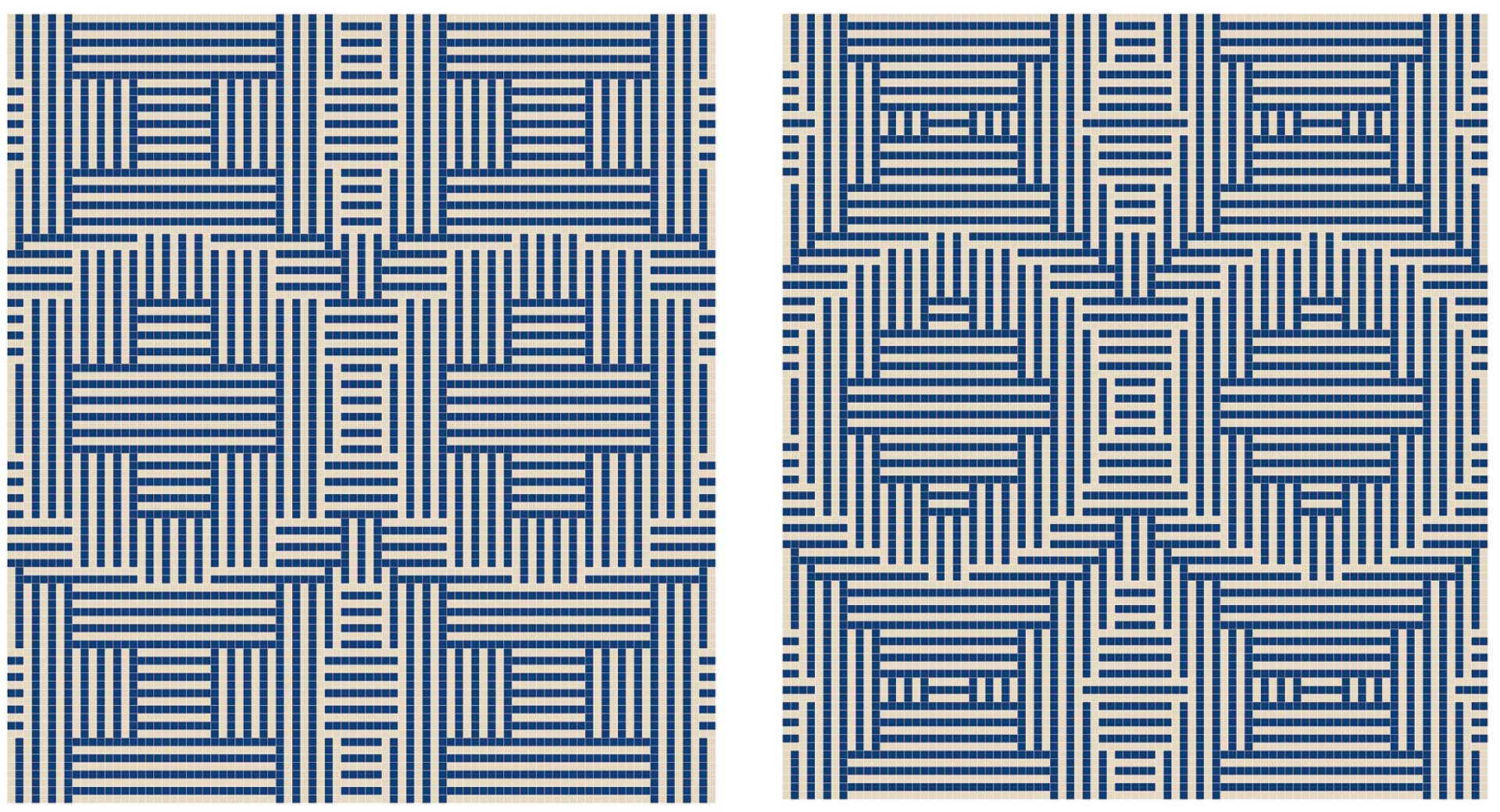
Throw by Suzie Liles. Left: 5a. 4-shaft design. Right: 5b. 6-shaft design.
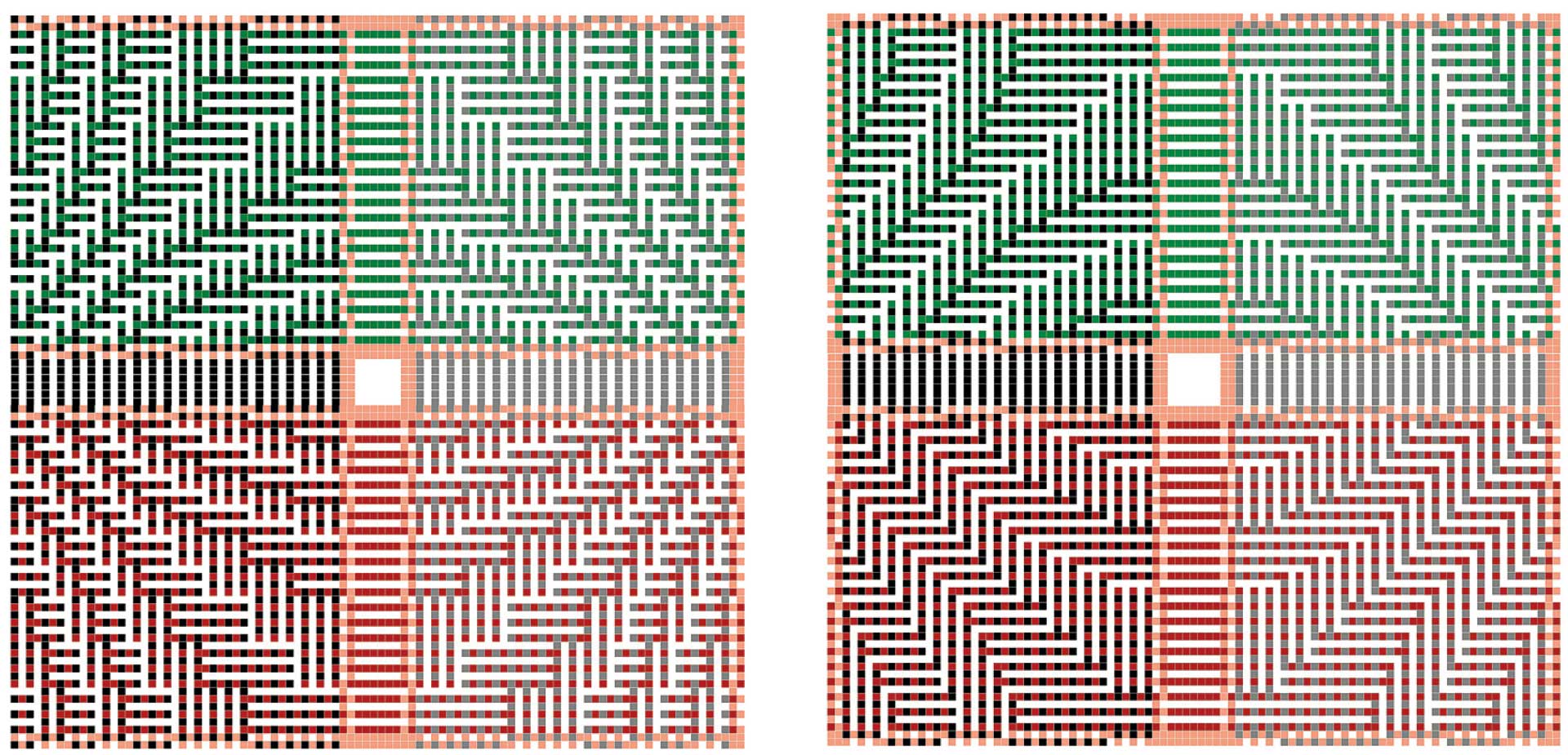
Shawl by Jannie Taylor.Left: 6a. 4-shaft design. Right: 6b. 8-shaft design.
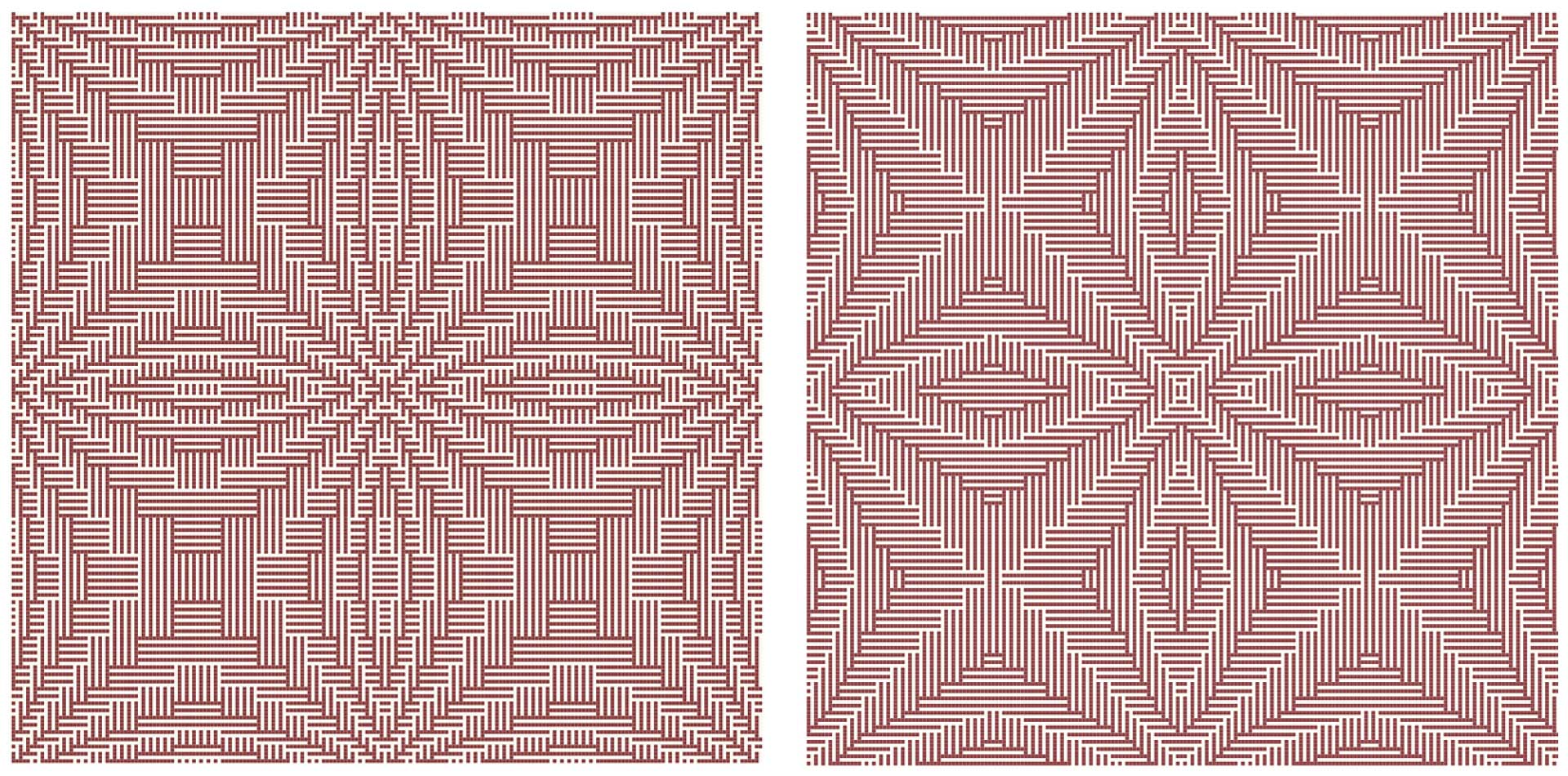
Vest fabric by Tracy Kaestner. Left: 7a. 4-shaft design. Right: 7b. 8-shaft design.
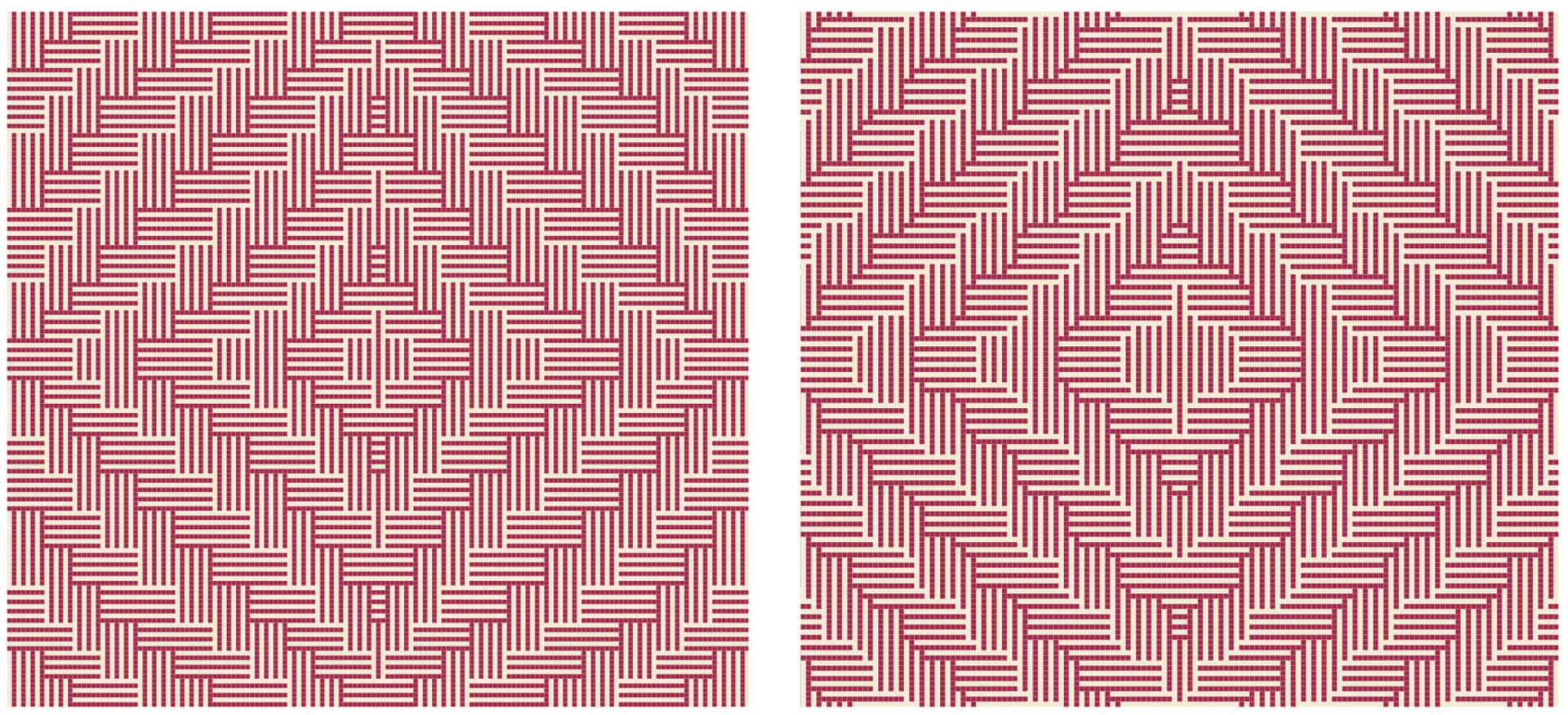
Poncho by Sarah Fortin. Left: 8a. 4-shaft design. Right: 9a. 8-shaft design.
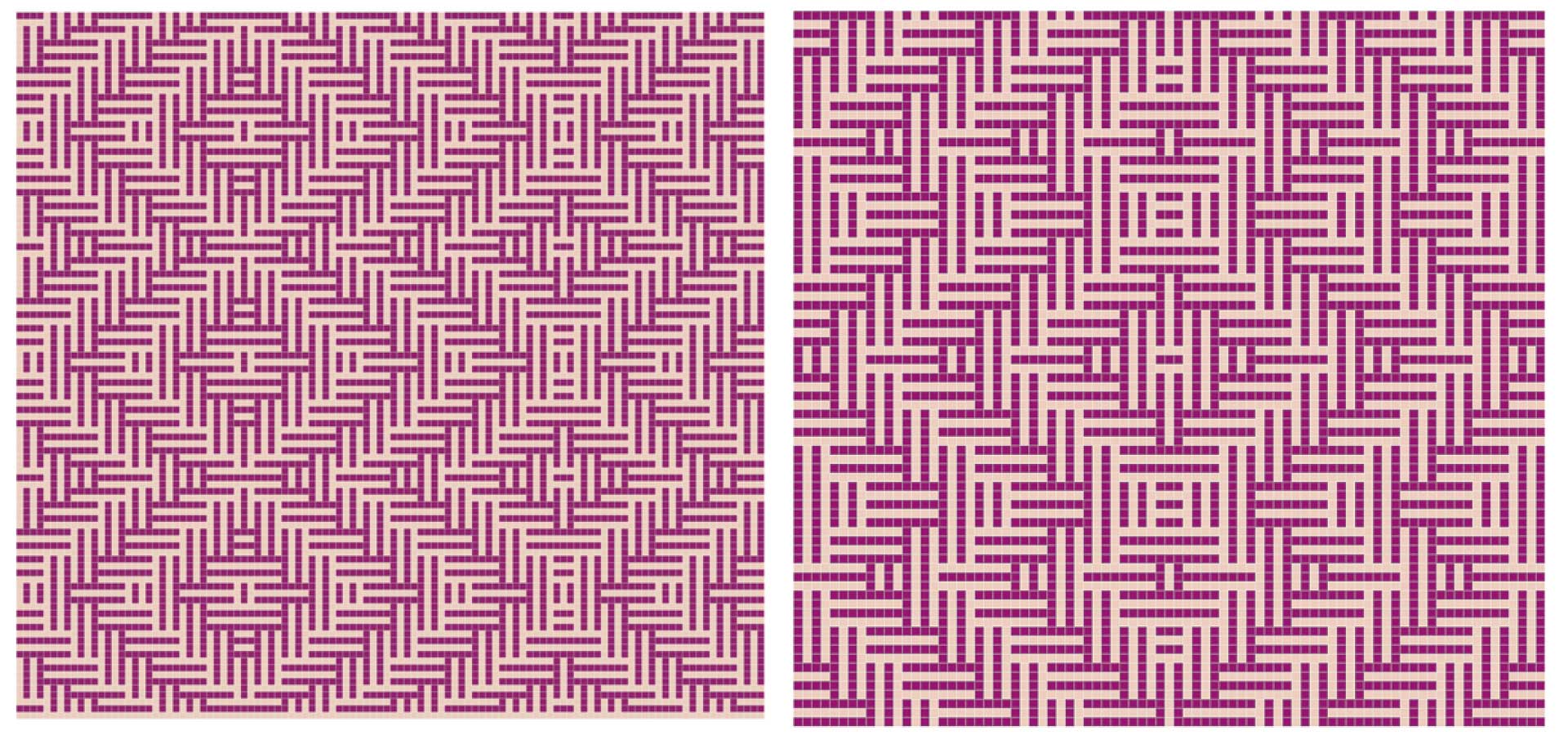
Scarves by Diane Kelly. 9a. 4-shaft designs.
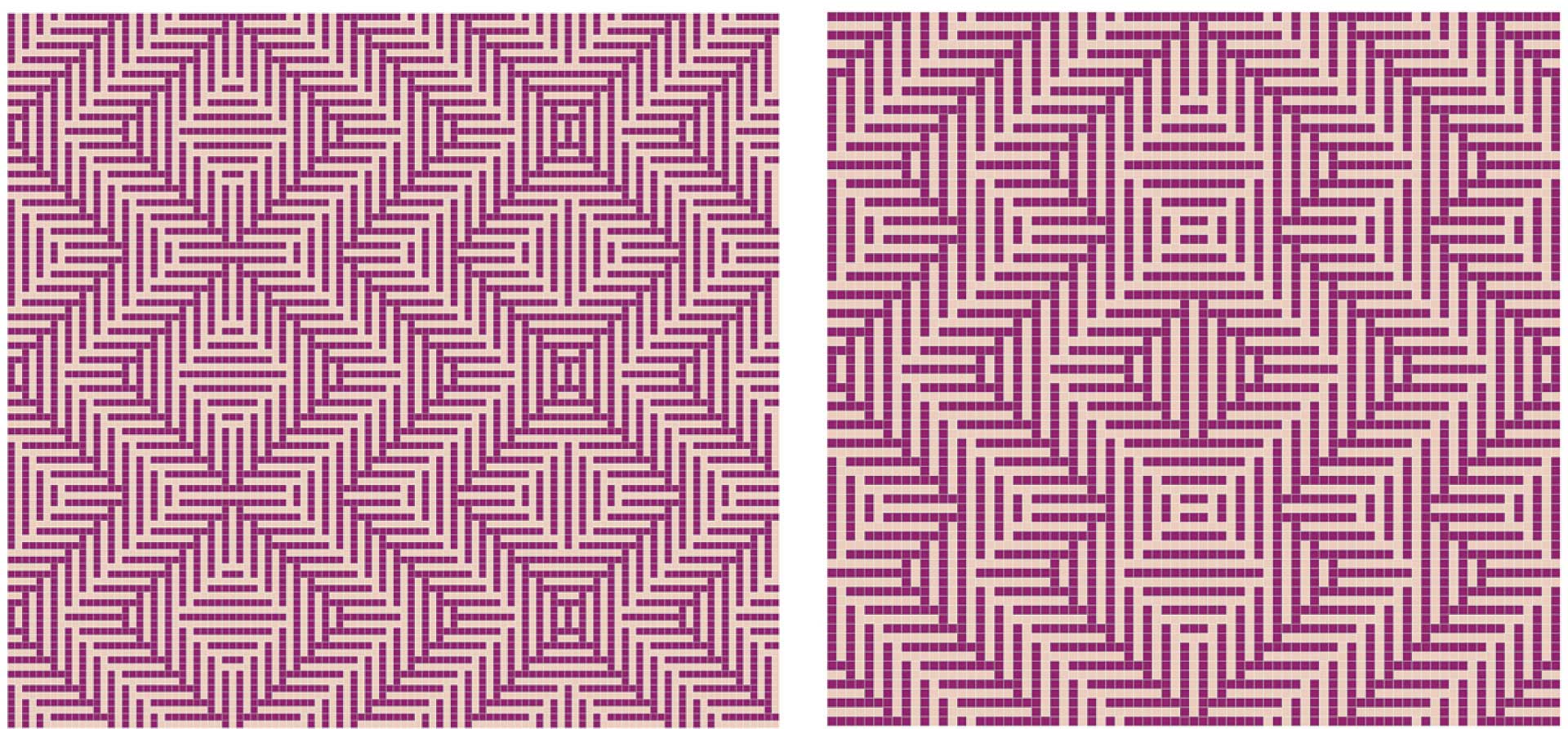
Scarves by Diane Kelly. 9b. 8-shaft designs.

Scarf by Susan Horton. Left: 10a. 4-shaft design. Right: 10b. 8-shaft design.
Note: Drawdowns created in Pixeloom
Resources
- Atwater, Mary Meigs. Shuttle-Craft Guild Bulletin. Basin, Montana, February 1942, p. 1.
- Barrett, Clotilde, Shadow Weave and Corkscrew Weave. Boulder, Colorado: Colorado Fiber Center, 1980.
- Powell, Marian. 1000(+) Patterns in 4, 6, and 8 Harness Shadow Weaves. McMinnville, Oregon: Robin and Russ Handweavers, 1976.
- van der Hoogt, Madelyn. “Color-and-Weave Basics: An Overview.” Handwoven, March/April 2005, pp. 34–37.
P.S. More Ways to Learn About Shadow Weave
Along with all these great resources, it can also be helpful to take a course on shadow weave. There are many great virtual and in-person options, including Introduction to Shadow Weave. In this online course, award-winning weaver and teacher Jannie Taylor introduces you to shadow weave and its infinite patterning possibilities. She's ready to share her years of experience learning how to weave shadow weave and help you discover all its magical possibilities. Learn more and get started weaving shadow weave today!

